5.2: The Importance of Diversity in Library Programs and Material Collections for Children
- Page ID
- 129467
Abstract

Children encounter diversity on a regular basis in their interactions with others at home, in school, or around their neighborhood. As our nation continues to diversify, it is essential that children learn to understand the important role of their culture and the cultures of other people in creating an overall global culture respectful of differences. One way that children learn about the world around them and other cultures is through the social messages found in stories. Stories help children understand how society perceives their culture as well as the cultures of their classmates, teachers, caregivers, and others, thereby influencing their social and identity development. Stories can be found in traditional print materials for children or in newer digital formats. Regardless of the format for delivering a story’s message, children are greatly influenced by the stories they encounter. One place that children can interact with stories on a regular basis is the library. Through its materials collections and programs, the library introduces children to many stories, starting at a very young age. This white paper emphasizes the importance of developing print and digital library collections that reflect cultural diversity, and details how librarians can promote cultural understanding through library programs that embody the diversity of their communities and the larger world. It concludes that stories reflecting diversity should be routinely included in library programs throughout the year and represented in print and digital material collections and displays.
Background
Diversity in library collections and programs refers to cultural diversity. Culture includes shared characteristics that define how a person lives, thinks, and creates meaning. These characteristics include customs, traditions, rituals, food, dress, and language. Typically people from the same cultural group share similar characteristics. Nieto (1999) explains that the idea of culture is complex, extending beyond foods, festivals, fashion, and folklore to include daily experiences influenced by myriad social factors defined by a particular community or region as well as larger national influences. Ethnicity, race, family composition, ancestry, ability, sexual orientation, socioeconomic status, language fluency, citizenship status, religious preference, age, gender expression, education level, and domicile are all aspects of a person’s culture. Children experience culture by way of their families’ values and practices, in their daily interactions with others in school and throughout the community, and through the stories and characters they encounter in books, television programs and films, music, video and computer games, digital apps, and other forms of print and digital media.
In the field of sociocultural psychology, the work of Vygotsky (1986) informs us that language and culture play a significant role in a child’s social and identity development and construction of meaning. Cultural traditions and social practices have the ability to moderate the way children think and learn. A child’s self-esteem is largely influenced by the way the child and overall society views the cultural group to which the child belongs. Vygotsky explains that children use expressive media such as books to understand the world around them. Bishop (1997) also acknowledges the power of children’s stories to influence a child’s perception and suggests that children’s literature can serve as a mirror reflecting a child’s own life and culture, or as a window allowing children to peer into the lives of others. Books and other print and digital media convey to children how the world perceives people who are like them as well as people who are different. By the time they are toddlers, children have begun to develop a sense of self that is informed by the world around them (HughesHassell and Cox 2010). Children’s materials that accurately portray diversity in multiple languages and cultures can have a positive influence on a child’s self-image and help him or her build bridges of cultural understanding. All children want to see images that reflect themselves and encounter stories in their native language and within the context of their personal cultures. Diverse, culturally authentic materials in library collections allow all children to meet people like themselves and develop an appreciation for the beauty of their culture and the cultures of others. Children’s book author and illustrator Christopher Myers observes that books can also serve as road maps leading children to their destinies. Through the stories they encounter, children develop “an atlas of their world, of their relationships to others, [and] of their possible destinations” (C. Myers 2014).
Children’s materials that provide inaccurate, stereotyped depictions of diverse languages and cultures can equally influence children. If children are consistently exposed to books and other media that negatively represent their culture, then it is likely they will internalize these social messages and develop a poor sense of self. Similarly, negative images or misinformation about a particular cultural group reinforces stereotypes in children outside the culture (W. Myers 2014). Children’s picture books are some of the earliest forms of media that teach children about diversity in the world. Social messages that young children glean from picture books will likely stay with them for the rest of their lives (Roethler 1998; Henderson 1991).
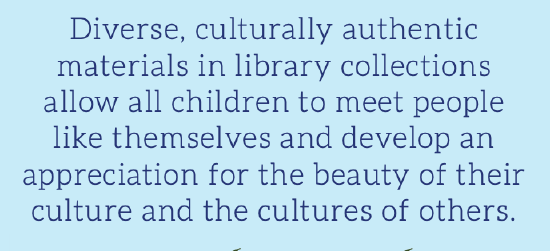
The absence of a child’s culture from the stories in print and digital media can also be problematic. When children never see their culture represented in a library storytime or in materials on the library shelves, they receive a resounding message that the librarian does not think their culture is important enough to feature in the library. This invisibility within the library’s programs and materials can equally be harmful to a child’s self-image. Latina children’s book author and illustrator Maya Christina Gonzalez recalls that as a young child she felt lost in the library among the rows of books that reflected the lives of other children but not her Latino culture. Although she would often draw herself on the inside covers of her coloring books, she still did not feel important because there were no “real” hardcover library books depicting her experiences (2011). The problem of cultural invisibility or the lack of diversity in children’s materials is a long-standing one. In 1941, Charlemae Hill Rollins observed that few children’s books depicting African Americans were available and those that were accessible contained numerous harmful stereotypes. Later in 1965, Nancy Larrick reemphasized the lack of diversity in children’s books in her seminal article “The AllWhite World of Children’s Books,” which chastised publishers for not publishing more books about African Americans. Afterwards, the Council on Interracial Books for Children (CIBC) began publishing additional reports highlighting the paucity of books representing African Americans, Latinos, Asian Americans, American Indians, people with disabilities, and gays and lesbians. In 1980, CIBC published a series of guidelines, Ten Quick Ways to Analyze Children’s Books for Sexism and Racism, that are still used by librarians today to evaluate diversity in children’s books. In the 1990s, more books representing cultural diversity began to appear in the United States, but compared to the overall number of books published each year, these books were greatly outnumbered by books representing White middleclass families. In 2014, Christopher Myers described this “AllWhite World” as “apartheid in literature,” where stories about people of color (and other minorities) are relegated to townships, while stories about animals and White characters compose the predominant world of children’s literature.
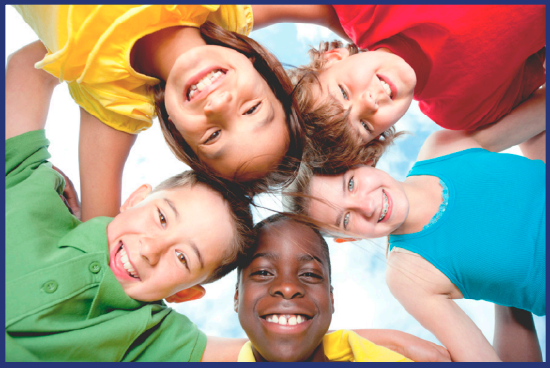
Every year since 1994, the Cooperative Children’s Book Center at the University of Wisconsin–Madison has kept statistics on the number of children’s books published about American Indians, Asian Americans, Latinos, and African Americans. In 1994, just over 8 percent of children’s books published in the United States represented these populations. Twenty years later, this number is virtually the same, indicating that many children in the United States still do not have as many opportunities to see their cultures represented as White middle-class children do. As previously indicated, this lack of diversity in children’s books can be harmful to the social and identity development of children, particularly those representing cultures with untold stories.
It is equally important for children to be exposed to library programs that highlight materials representing the diversity in languages and cultures present not only in their local community but also the larger world (Baker 1955; White 1964; Tate 1971; Larson 2011). Diversity in library programming allows children and their caregivers to develop cultural literacy, or an appreciation of their culture as well as the cultures of other people. Consistently offering programs that highlight cultural and linguistic diversity provides opportunities for children and their families to begin the journey to developing cultural competence, or the awareness of one’s own culture and the contributions of other cultures, the ability to interact with other individuals from diverse cultures, and an understanding of how cultures are integrated together within our larger society (Montiel-Overall 2009). When children’s librarians introduce diversity in materials and programming and promote cultural competence, they create learning environments that help children develop a positive sense of self, explore the larger world around them, and celebrate the accomplishments of people from diverse cultural and linguistic backgrounds. One way to promote cultural competence in the library is through the literacy initiative El día de los niños/El día de los libros (Children’s Day/Book Day), or Día for short. Developed in 1996 by Latina author Pat Mora along with founding partner REFORMA (The National Association to Promote Library and Information Services to Latinos and the Spanish-Speaking), Día is a family literacy program that uses libraries to connect children to books representing cultural and linguistic diversity. Housed at the Association for Library Service to Children (ALSC), a division of the American Library Association (ALA), Día emphasizes the importance of connecting all children from all cultural backgrounds with library materials in many languages about many cultures.
The goals of Día include celebrating children and connecting them to the world of learning through books, stories, and libraries; nurturing cognitive and literacy development in ways that honor and embrace a child’s home language and culture; introducing families to community resources that provide opportunities for learning through multiple literacies; and recognizing and respecting culture, heritage, and language as powerful tools for strengthening families and communities. (ALSC 2013)
Día can be celebrated year-round with culminating events on April 30, the official day for celebrating children and books. Librarians who recognize Día as a daily commitment and incorporate its goals into their regular programming demonstrate their commitment to promoting diversity in library collections and programs.
Position
Recognized as trusted spaces that welcome children to explore, discover, and connect to the larger world, libraries can play an integral role in helping them develop understanding and respect for other people from diverse cultural and linguistic backgrounds. As our nation continues to diversify, it is essential that children learn to understand the important role of their culture and the cultures of other people in creating an overall global culture respectful of differences. By including diversity in its programs and collections, the library has the potential for helping children make cross-cultural connections and develop the skills necessary to function in a culturally pluralistic society.
Both the Institute of Museum and Library Services’ Growing Young Minds: How Museums and Libraries Create Lifelong Learners (2013) and the Pew Research Center’s Parents, Children, Libraries, and Reading (Miller et al. 2013) attest to the important role of the library as one of the first teachers of young children, delivering content-rich, age-appropriate early literacy programs and providing access to high-quality, engaging print and digital material collections. When libraries offer culturally authentic materials and displays, they convey the importance of using print and digital media to learn how different cultures share commonalities that make us very similar, but also have unique traits that enrich the world. By delivering culturally responsive programs such as Día, libraries (1) link home cultures with the larger social culture to promote traditional literacy; (2) provide an opportunity for silenced voices to be heard; (3) promote lifelong learning and achievement; (4) celebrate linguistic and cultural diversity; and (5) empower children to function in a global society (Diamond and Moore 1995).
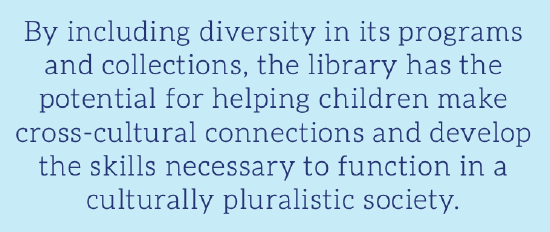
An excellent way to build cultural bridges is to integrate authentic contemporary children’s literature about diverse groups into library programs to promote cultural literacy and global understanding, thereby introducing children to the rich cultures of their peers, teachers, or future acquaintances (Moreillon 2013). Studies indicate that by preschool age, young children reveal stereotypes and negative behaviors towards those they perceive as different. These learned attitudes are fostered by the views of parents, caregivers, educators, and peers and by the social messages that reading materials convey about a particular culture. Librarians can help children develop favorable attitudes towards those perceived as the “other” by introducing them to authentic, high-quality literature about diverse cultures. Particularly, positive representations of diversity in children’s materials
- provide positive role models for culturally diverse children;
- introduce children to characters with similar experiences and emotions;
- convey the richness and beauty of the diverse cultures in the United States;
- reinforce a distinct cultural identity;
- promote multilingual and literacy development;
- inspire learning of other cultures and general cultural knowledge;
- facilitate acceptance of cultures different from one’s own; and
- foster global connections.
When selecting books for the library collection or to use in library programs, it is imperative that children’s librarians choose materials representative of a wide range of perspectives and cultures. Opportunities should be provided for children and caregivers to hear stories and interact with characters whose lives and experiences are different from their own. Children need a global perspective on the world in order to develop cultural competence and move beyond their immediate environment. They need to hear more than one story once a year about a particular cultural group. Adichie (2009) warns that a single story can create or perpetuate stereotypes about a particular culture, offering children their only foray in the experiences of the “other” in society.
Librarians often rely on culturally generic books for storytime programs and exile cultural explorations to holidays and specialized heritage months: Black History Month, Chinese New Year, Native American Heritage Month, Hanukkah, AsianPacific American Heritage Month, Day of the Dead, and so on. If a child is only introduced to books about her culture one time a year, then she internalizes that the librarian thinks she or her culture is not important. What if this one-month venture into cultures includes materials that stereotype, demean, or provide misinformation? What is the culturally diverse child internalizing and what are her classmates learning about her culture? Even the highest quality materials and culturally authentic activities are irrelevant if children learn that their particular culture or the culture of their peers is not good enough to study or talk about throughout the year. While middle-class White children in heterosexual nuclear families have the opportunity to see their culture represented in library collections, programs, and displays on a daily basis, other children are lucky if they get their own special month or day. It is imperative that diversity be included in library programs and displays routinely throughout the year.
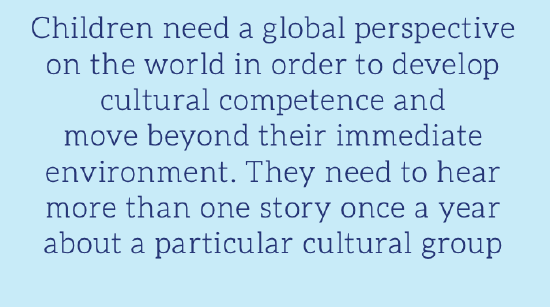
Similarly, if children are not exposed to the lives, cultures, and languages of children from around the world, they miss the opportunity to learn how to function in a culturally pluralistic world. Global understanding is part of being culturally competent. Children that exhibit global understanding can acknowledge how cultural differences, personal decisions, and social issues impact lives at a global level. At the same time, these children engage in local, national, or international social justice projects that reach out to their counterparts around the world.
The road to developing global understanding and achieving cultural competence can start in the children’s library by way of collections and programs that include cultural diversity.
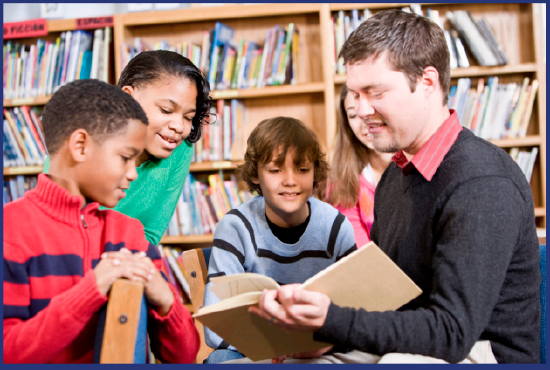
Culturally responsive programs facilitate understanding and acceptance of diversity based upon culture, ethnicity, linguistic ability, religion, physical ability, immigration status, and sexual orientation. However, some librarians may not know how to offer these types of programs; instead they attempt to promote cultural competence and global understanding through a “tourist approach” common in many diversity-oriented library programs. This approach highlights the five Fs—foods, festivals, folklore, fashion, and famous people of a particular culture—rather than exploring the daily interactions of people within that culture. Ostensibly this practice may not seem objectionable, but it cannot be the only way to introduce and explore cultures in the library. Children need opportunities for meaningful engagement with cultures that are different from their own. Librarians have to be cautious when using the five Fs to avoid perpetuating cultural stereotypes and tokenism. Often this approach focuses on cultural elements that are exotic, flashy, or quaint. Introducing children to unusual fashion or “costumes” and festivals from a culture reinforces a sense of exoticism or otherness rather than fostering understanding. Only sharing folktales with children can give them a distorted view of a particular culture. When librarians rely on the five Fs to explore cultural diversity, it is extremely problematic if any of the Fs are not culturally accurate or reinforce outdated stereotypes. It is important for librarians to select materials that include books written and illustrated by people either from the culture being profiled or with considerable knowledge about and experience related to the culture. Librarians should examine the copyright date of the materials to identify outdated content. Some publishers of informational books will use the same photo in multiple editions of a book, only updating the narrative. This becomes problematic when a book meant to represent the contemporary lives of South Africans features photos taken before apartheid ended.
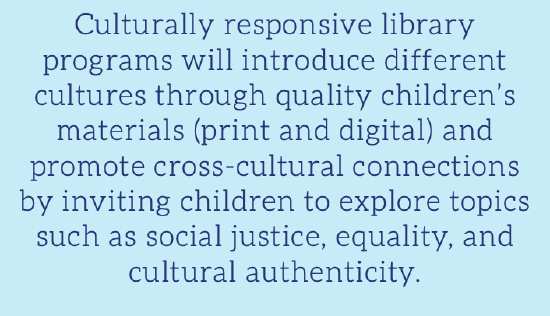
Culturally responsive library programs will introduce different cultures through quality children’s materials (print and digital) and promote cross-cultural connections by inviting children to explore topics such as social justice, equality, and cultural authenticity. Culturally responsive programs provide a forum for examining issues of ethnicity, class, and culture. A library fully engaged in promoting cultural competence through collections and programs provides numerous opportunities for children and their families to learn about new cultures. Language is part of a child’s culture. Libraries reinforce multilingualism by offering programs introducing children to a variety of languages and encouraging them to play with language acquisition. In a culturally competent library program, librarians share books and other materials about diverse cultures and introduce children to diverse languages through readalouds in multiple languages, or songs designed to teach language learning.
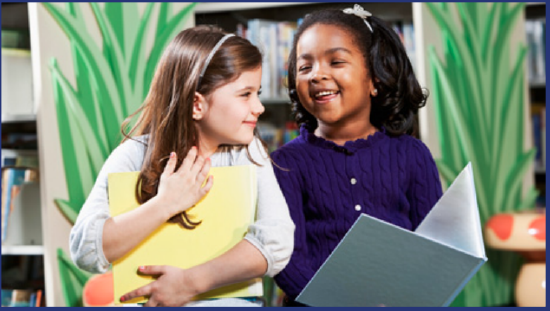
Through cultural literacy initiatives such as Día, libraries have natural avenues for infusing cultural competence into their programs and services. Día allows libraries to build bridges between home cultures and languages and those of the school, library, larger community, and world. With its focus on celebrating diverse languages and cultures, Día provides a model for librarians interested in developing programs responsive to the needs of their local community. For programs to be successful, Garcia and Hasson (2004) note that librarians must design experiences that focus on the daily realities relevant to target populations. Librarians should keep in mind that particular populations or segments of their community may not readily have access to transportation to attend library programs. In these instances, librarians may want to develop outreach programs that propel the library into culturally diverse communities or partner with local community organizations currently serving these populations. Library programs should reflect the interests and goals of the target population. The most successful culturally responsive libraries involve diverse communities in the planning process, allowing them to assist in the materials selection, program development and delivery, and marketing. For years, public libraries have embraced Día as the cultural programming model for reaching culturally and linguistically diverse children and families. Día includes a diverse array of materials in multiple languages and about diverse cultures.
While the name Día is the Spanish word for day, Día can also stand for “Diversity in Action.” When librarians embrace the charge of the literacy initiative to embody library programs that represent diversity in action, they understand that the principles of Día can be used throughout the year to promote cultural competence every day in library programs and collections. By making every day a Día day, librarians make a daily commitment to serving all children with resources and programs that foster global understanding, language learning, and cultural explorations. In doing so, libraries are able to deliver content-rich, age-appropriate early literacy programs for all children and provide access to high-quality, engaging print and digital material collections that help children develop a positive identity and make cultural connections.
Conclusion
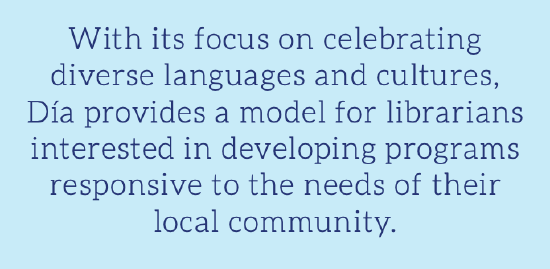
Including diversity in library programming and materials for children is important for all librarians meeting the informational and recreational needs of their local communities. Children’s print and digital materials should represent all types of diversity, including race, ethnicity, gender expression, religious preference, family composition, ancestry, ability, sexual orientation, socioeconomic status, language fluency, and citizenship status. More children’s books representing diverse cultures should be made available to children through library collections to assist in their identity development and to help them make global connections.

Children and their families should be exposed to library programs throughout the year that celebrate cultural diversity and provide opportunities for developing bridges of understanding. The literacy initiative Día provides children’s librarians with recommended materials and programming ideas for incorporating diversity into their daily library practices and emphasizes the library’s commitment to serving all children from diverse cultural and linguistic backgrounds. Día offers library administrators and staff a replicable model, useful information, and invaluable resources to assist them in planning and developing culturally responsive and effective programs, collections, and services to meet the informational and recreational needs of their diverse communities.
References
- Adichie, Chimamanda Ngozi. 2009. “The Danger of a Single Story.” TED video, 18:49. Accessed Feb. 20, 2014. http://www.ted.com/talks/chimamanda_...gle_story.html.
- Association for Library Service to Children. 2013. “About Día” webpage. Accessed Feb. 28, 2014. http://dia.ala.org/content/about-día.
- Baker, Augusta. 1955. “The Children’s Librarian in a Changing Neighborhood.” Top of the News 10 (Mar.): 40–41.
- Bishop, Rudine Sims. 1997. “Selecting Literature for a Multicultural Curriculum.” In Using Multiethnic Literature in the K–8 Classroom, edited by Violet Harris, 1–20. Norwood, MA: Christopher-Gordon Publishers.
- Cooperative Children’s Book Center. “Children’s Books by and about People of Color Published in the United States.” Annual Statistics. Accessed Mar. 6, 2014. http://ccbc.education.wisc.edu/books/pcstats.asp.
- Council on Interracial Books for Children. 1980. Ten Quick Ways to Analyze Children’s Books for Sexism and Racism. New York: Council on Interracial Books for Children.
- Diamond, Barbara, and Margaret Moore. 1995. Multicultural Literacy: Mirroring the Reality of the Classroom. White Plains, NY: Longman.
- Garcia, Delia, and Deborah Hasson. 2004. “Implementing Family Literacy Programs for Linguistically and Culturally Diverse Populations: Key Elements to Consider.” School Community Journal 14 (1): 113–37.
- Gonzalez, Maya Christina. 2011. “I Am All That I See: The Power of Reflection.” In Celebrating Cuentos: Promoting Latino Children’s Literature and Literacy in Classrooms and Libraries, edited by Jamie Campbell Naidoo, 319–26. Santa Barbara, CA: Libraries Unlimited.
- Henderson, Virginia M. 1991. “The Development of Self-Esteem in Children of Color.” In The Multicolored Mirror: Cultural Substance in Literature for Children and Young Adults, edited by Merri V. Lindgren, 15–30. Fort Atkinson, WI: Highsmith Press.
- Hughes-Hassell, Sandra, and Ernie J. Cox. 2010. “Inside Board Books: Representations of People of Color.” The Library Quarterly 80 (3): 211–30.
- Institute of Museum and Library Services. 2013. Growing Young Minds: How Museums and Libraries Create Lifelong Learners. Washington, D.C.: Institute of Museum and Library Services. PDF. Accessed Mar. 9, 2014. http://www.imls.gov/assets/1/ AssetManager/GrowingYoungMinds.pdf.
- Larrick, Nancy. 1965. “The All-White World of Children’s Books.” Saturday Review 11 (Sept.): 63–65.
- Larson, Jeanette. 2011. “Building a Culture of Literacy through Día: Library Events Celebrate Bilingual Bookjoy,” American Libraries (Mar./Apr.). Accessed Mar. 16, 2014. http://www.americanlibrariesmagazine...acy-through-dí.
- Miller, Carolyn, Kathryn Zickuhr, Lee Rainie, and Kristen Purcell. 2013. Parents, Children, Libraries, and Reading. Pew Research Center’s Internet & American Life Project. Accessed Mar. 8, 2014. http://libraries.pewinternet .org/2013/05/01/parents-children-libraries-and-reading/.
- Montiel-Overall, Patricia. 2009. “Cultural Competence: A Conceptual Framework for Library and Information Science Professionals.” The Library Quarterly 79 (2): 175–204.
- Moreillon, Judi. 2013. “Building Bridges for Cultural Understanding: Cultural Literature Collection Development and Programming.” Children and Libraries 11 (2): 35–38.
- Myers, Christopher. 2014. “The Apartheid of Children’s Literature.” New York Times, Mar. 15. Accessed Mar. 17, 2014. http://www.nytimes.com/2014/03/16/op...iterature.html.
- Myers, Walter Dean. 2014. “Where Are the People of Color in Children’s Books?” New York Times, Mar. 15. Accessed Mar. 17, 2014. http://www.nytimes.com/2014/03/16/op...rensbooks.html.
- Nieto, Sonia. 1999. The Light in Their Eyes: Creating Multicultural Learning Communities. New York: Teachers College Press.
- Roethler, Jacque. 1998. “Reading in Color: Children’s Book Illustrations and Identity Formation for Black Children in the United States.” African American Review 32 (1): 95–105.
- Rollins, Charlemae Hill, ed. 1941. We Build Together: A Reader’s Guide to Negro Life and Literature for Elementary and High School Use. Urbana, IL: National Council of Teachers of English.
- Tate, Binnie L. 1971. “The Role of the Children’s Librarian in Serving the Disadvantaged.” Library Trends 20 (Oct.): 392–404.
- Vygotsky, Lev. 1986. Thought and Language. Cambridge, MA: MIT Press.
- White, Pura Belpré. 1964. A Bilingual Story Hour Program.Library Journal 89 (Sept. 15): 79–81.
Association for Library Service to Children (ALSC) Diversity Resources
- “ALSC/Candlewick Press ‘Light the Way: Outreach to the Underserved’ Grant” webpage, http://www.ala.org/alsc/ awardsgrants/profawards/candlewicklighttheway
- “Books on Islam for Children and Teens” webpage, http://www.ala.org/alsc/compubs/booklists/islambooks
- El día de los niños/El día de los libros (Children’s Day/Book Day) Diversity Initiative website, http://dia.ala.org
- “Growing Up around the World: Books as Passports to Global Understanding for Children in the United States” webpage, http://www.ala.org/alsc/compubs/book...gUpAroundWorld
Online Collection Development Resources
- American Indians in Children’s Literature blog, by Debbie Reese, http://americanindiansinchildrenslit....blogspot.com/
- The Brown Bookshelf website, by Varian Johnson et al., http://thebrownbookshelf.com/
- CBC Diversity website, by Children’s Book Council, http://www.cbcdiversity.com
- De Colores: The Raza Experience in Books for Children blog, by Beverly Slapin et al., http://decoloresreviews.blogspot.com
- Gay-Themed Picture Books for Children blog, by Patricia A. Sarles, http://booksforkidsingayfamilies.blogspot.com/
- International Children’s Digital Library website, by the University of Maryland, http://en.childrenslibrary.org/
- “Multicultural Reading” webpage, by Cynthia Leitich Smith, http://www.cynthialeitichsmith.com/lit_resources/ diversity/multicultural/multi_biblio.html
Awards for Culturally Diverse Children’s Literature
- American Indian Youth Literature Award, sponsored by the American Indian Library Association, http://ailanet.org/activities/americ...erature-award/
- Américas Book Award for Children’s and Young Adult Literature (Latino literature), sponsored by the Consortium of Latin American Studies Programs, http://www4.uwm.edu/clacs/aa/index.cfm; http://claspprograms.org/pages/detai...cas-Book-Award
- Arab American Book Award, sponsored by the Arab American National Museum, http://www.arabamericanmuseum.org/bookaward
- Asian/Pacific American Award for Literature, sponsored by the Asian Pacific American Librarians Association, http://www.apalaweb.org/awards/literature-awards/
- Carter G. Woodson Book Award (literature depicting ethnicity in the U.S.), sponsored by the National Council for the Social Studies, http://www.socialstudies.org/awards/woodson
- Coretta Scott King Book Awards (African American literature), sponsored by the American Library Association’s Ethnic and Multicultural Information Exchange Round Table (EMIERT), http://www.ala.org/ala/mgrps/rts/emiert/ cskbookawards/index.cfm
- Dolly Gray Children’s Literature Award (literature depicting children with disabilities), sponsored by the Council for Exceptional Children’s Division on Autism and Developmental Disabilities, http://daddcec.org/Awards/DollyGrayAwards.aspx
- Jane Addams Children’s Book Awards (literature promoting peace, social justice, world community, and equality of the sexes), sponsored by the Jane Addams Peace Association and the Women’s International League for Peace and Freedom, http://www.janeaddamspeace.org/jacba/
- Middle East Book Awards, sponsored by the Middle East Outreach Council, http://www.meoc.us/meoc/book-awards
- Notable Books for a Global Society (global children’s literature), sponsored by the International Reading Association, http://clrsig.org/nbgs.php
- Outstanding International Books List, sponsored by the United States Board on Books for Young People, http://www.usbby.org/list_oibl.html
- Pura Belpré Award (Latino literature), sponsored by the Association for Library Service to Children and REFORMA, http://www.ala.org/alsc/awardsgrants...ia/belpremedal
- Rainbow List (LGBTQ children’s and young adult literature), sponsored by the American Library Association’s Gay, Lesbian, Bisexual, and Transgender Round Table (GLBTRT), http://glbtrt.ala.org/rainbowbooks/
- Schneider Family Book Award (literature about children with disabilities), sponsored by Katherine Schneider and the American Library Association, http://www.ala.org/awardsgrants/schn...ily-book-award
- South Asia Book Award, sponsored by the South Asia National Outreach Consortium, http://www.sanoc.org/saba.html
- Stonewall Children’s and Young Adult Literature Award (LGBTQ literature), sponsored by the American Library Association’s Gay, Lesbian, Bixecual, and Transgender Round Table (GLBTRT), http://www.ala.org/glbtrt/award
- Sydney Taylor Book Award (Jewish literature), sponsored by the Association of Jewish Libraries, http://www.jewishlibraries.org/main/...BookAward.aspx
- Tomás Rivera Mexican American Children’s Book Award, sponsored by Texas State University’s College of Education, http://www.education.txstate.edu/c-p...ject-Link.html
Multicultural Children’s Program Resources
- ¡Colorín Colorado! website, by Reading Rockets, http://www.colorincolorado.org/
- “Dai Dai Xiang Chuan: Bridging Generations, a Bag at a Time” webpage, by the Chinese American Librarians Association, http://daidai.cala-web.org/
- Lee y serás® (Read and You Will Be) website, by Scholastic, http://www.leeyseras.net
- Noche de Cuentos website, by REFORMA (The National Association to Promote Library and Information Services to Latinos and the Spanish-Speaking), http://nochedecuentos.org/
- Programming Librarian website, by the American Library Association, http://www.programminglibrarian.org/home.html
- “Reading Is Grand! Celebrating Grand-Families @ Your Library” webpage, by the Black Caucus of the American Library Association, http://bcalareadingisgrand.weebly.com
- Talk Story: Sharing Stories, Sharing Culture website, by the American Indian Library Association and the Asian Pacific American Librarians Association, http://talkstorytogether.org/
Professional Library Associations Dedicated to Culturally Diverse Groups
- American Indian Library Association (AILA), http://www.ailanet.org/
- American Library Association’s Ethnic and Multicultural Information Exchange Round Table (EMIERT), http://www.ala.org/ala/mgrps/rts/emiert/index.cfm
- American Library Association’s Gay, Lesbian, Bisexual, and Transgender Round Table (GLBTRT), http://www.ala.org/ala/mgrps/rts/glbtrt/index.cfm
- Asian Pacific American Librarians Association (APALA), http://www.apalaweb.org/
- Association of Jewish Libraries (AJL), http://www.jewishlibraries.org/main/
- Black Caucus of the American Library Association (BCALA), http://www.bcala.org/
- Chinese American Librarians Association (CALA), http://www.cala-web.org/
- International Board on Books for Young People (IBBY), http://www.ibby.org/
- International Federation of Library Associations and Institutions (IFLA), http://www.ifla.org/
- REFORMA (The National Association to Promote Library and Information Services to Latinos and the Spanish-Speaking), http://www.reforma.org/
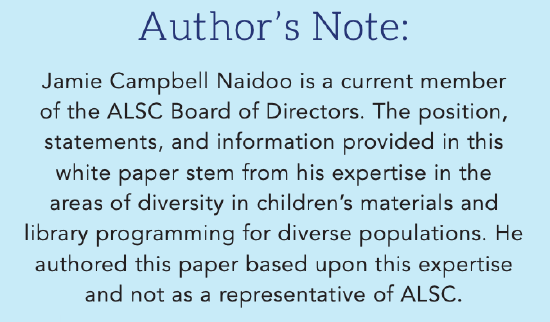
Source Information
The Importance of Diversity in Library Programs and Material Collections for Children
- Association for Library Services to Children
- http://www.ala.org/alsc/sites/ala.org.alsc/files/content/ALSCwhitepaper_importance%20of%20diversity_with%20graphics_FINAL.pdf
- No cost, “Permission to use, copy and distribute documents delivered from this website and related graphics is hereby granted for private, non-commercial and education purposes only…”

